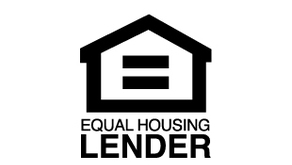The debt-to-income ratio is a term that mortgage lenders and financial experts use to determine how much debt you are taking on with your mortgage.
It’s also called the DTI, and it differs from other debt ratios because it takes into account not just debt but income as well.
This article will discuss what the DTI is, how it impacts your mortgage, and why potential homeowners should know about this before they apply for a mortgage.
How to Calculate Your Debt-To-Income Ratio
Mortgage lenders calculate your debt-to-income ratio by dividing your debt load by your gross monthly income.
Gross income is the money that you make before any deductions or taxes are taken out, such as social security and disability payments.
It includes bonuses, tips, commissions from sales jobs, and other miscellaneous sources of income not subject to withholding tax laws.
Dividing your monthly debt by your gross income provides your DTI in the form of a percentage. A lower DTI percentage is often considered less risky to most mortgage lenders.
For example, if you’re a borrower with a monthly housing payment of $3000 a $700 car payment, a minimum credit card payment of $300, and a gross monthly income of $12,000 then you have a debt-to-income ratio of 30%
Monthly bills that are considered by most lenders include:
- Student and auto loans
- Rent or house payments
- Minimum credit card payments
- Child support or alimony payments
- Other debts
Additional financial obligations such as your monthly food and transportation costs are often not included in a mortgage lender’s evaluation of your mortgage application.
Be sure to keep all your additional monthly expenses in mind to guarantee you’re comfortable with your monthly mortgage payments when approved for your home loan.
How Lenders Evaluate Your DTI Ratio
DTI helps mortgage lenders assess how much additional debt borrowers are capable of handling. A debt-to-income ratio of 28% is typical for most mortgage lenders.
Anything higher than that could limit your purchasing power depending on the loan type, so be sure to consider the debt you’re already carrying before applying for a new mortgage.
The DTI also helps lenders identify how risky it would be to lend money to someone based on the amount of their current debt.
A high DTI tells lenders that you may be taking on debt that you can’t afford to repay and is more likely to default, whereas a low debt-to-income ratio tells lenders that they only need to provide minimal interest rates for loans.
DTI Requirements for Different Loans
Many people believe that the lower the DTI ratio, the better. However, depending on the type of mortgage you are applying for, different DTI requirements will apply.
FHA Loans
An FHA loan is a mortgage insured by the Federal Housing Administration. These loans are often a good option for borrowers with lower debt-to-income ratios because they can qualify for smaller down payments, but have more strict debt requirements than conventional mortgages do.
An FHA loan has a DTI maximum of 50% although it varies based on your credit score. More specifically, to be eligible for an FHA loan, your front-end DTI (monthly mortgage payments) should not exceed 31%, and your back-end DTI (total monthly debt payments) should not exceed 50%.
Additional read – How Do FHA Loans Work?
VA Loans
A VA loan is a mortgage insured by the Veteran’s Administration. These loans are often a good option for borrowers with higher debt-to-income ratios.
While a VA loan has no DTI maximum, a DTI above 41% could potentially delay the approval process or lead to a higher mortgage interest rate. The VA doesn’t establish a maximum DTI ratio but uses it as a measure to help lenders.
Additional read – Mortgage Loan Limits Get a Boost in 2021: New Limits for Conventional and VA Loans
Conventional Loans
A conventional mortgage is not insured by the federal government. Conventional loans require that potential borrowers have a debt-to-income ratio of 45% to qualify.
Borrowers with a DTI ratio of 50% may still qualify for a conventional loan if they have a high credit score and large cash reserves.
Consulting with a reputable loan lender is the best way to decide which loan type is best for you and to determine whether your debt-to-income ratio will be an asset or a liability.
How to Improve Your DTI
If your debt-to-income ratio is evaluated as high-risk by lenders, it’s more likely that you will be rejected for a new mortgage. Fortunately, there are a few ways to reduce your debt and improve your DTI ratio:
- Pay off debts with the highest interest rates first
- Pay more than the minimum amount on your credit cards
- Defer expensive purchases to increase your down payment
- Don’t take out any new debt until you’ve paid down more of your existing debt
- Reduce monthly expenses by canceling subscriptions or lowering bills
After a few months of work, recalculate your DTI ratio to mark your progress and remain motivated. Ensuring you have a low DTI can not only give you peace of mind that you are handling your finances responsibly but can also help make it more likely that other credit opportunities will open up down the line.
Tips for Getting a Mortgage
Your debt-to-income ratio is just one of several factors that mortgage lenders consider when deciding whether to approve your mortgage application.
Other important factors include your credit score, monthly income, and debt-free time (how long it has been since you used debt).
Make sure to check with your mortgage lender about requirements before applying for any mortgage and work on improving your DTI over time.
The best way to improve the likelihood of getting approved for a new mortgage is by improving all three factors simultaneously.
That means paying down debt, resolving any credit issues from the past few years, and increasing the amount of money you contribute to your down payment.
Reach Out to A and N Mortgage Today
Mortgage lenders use the debt-to-income ratio to establish a borrower’s creditworthiness. The ideal debt-to-income ratio for a mortgage applicant varies depending on the debt-to-income ratio requirements for the mortgage type.
If you’re considering applying for a new mortgage to purchase that dream home but are currently carrying debt on other loans such as credit cards or student loans it’s important to speak with a mortgage lender.
Your lender will make sure that you qualify for a mortgage within the debt-to-income ratio requirements.
At A and N Mortgage, we help you determine which debt-to-income ratio will work best for your needs and situation! We’ll provide honest advice about debt-to-income ratios and help you explore your options to find a debt repayment plan that works with both your lifestyle and budget.
Our mortgage consultants are experts on all types of mortgages and will work hard to find the best option that is both affordable but also meets your debt obligations.
Do you have questions about your DTI ratio? Contact us today!
A and N Mortgage Services Inc, a mortgage banker in Chicago, IL provides you with high-quality home loan programs, including FHA home loans, tailored to fit your unique situation with some of the most competitive rates in the nation. Whether you are a first-time homebuyer, relocating to a new job, or buying an investment property, our expert team will help you use your new mortgage as a smart financial tool.







